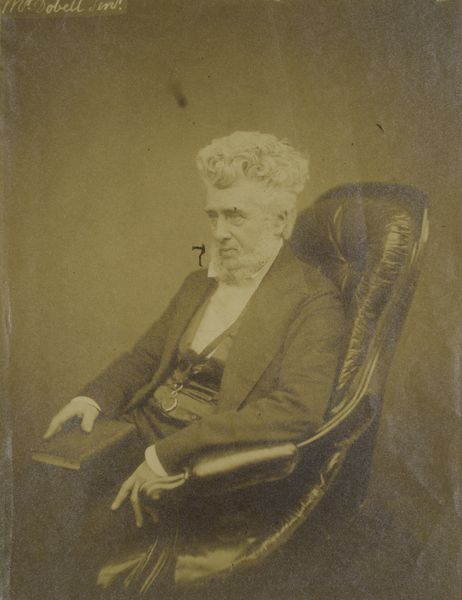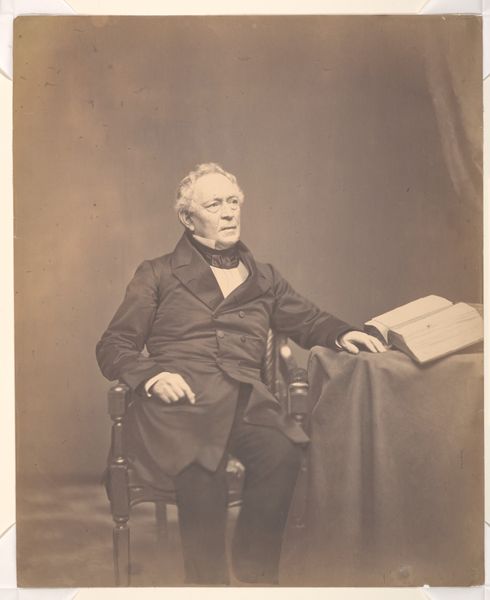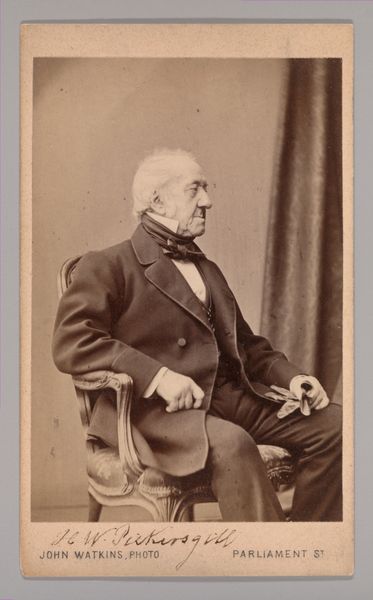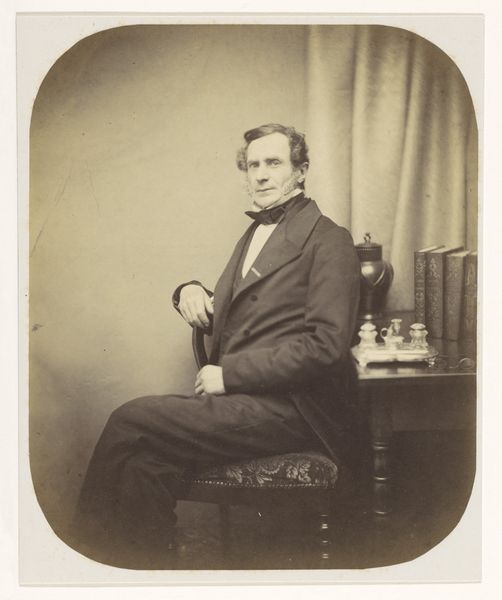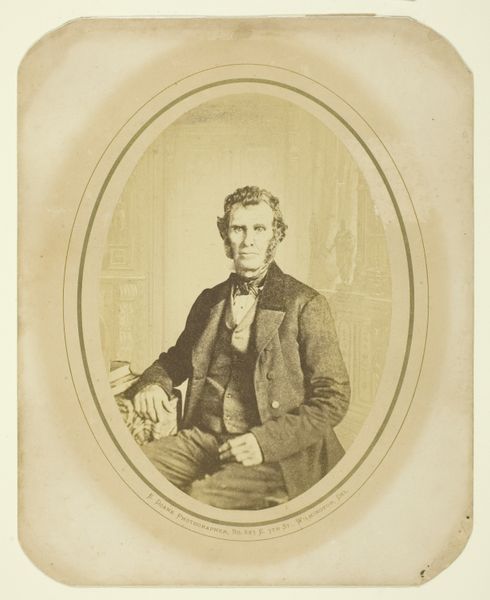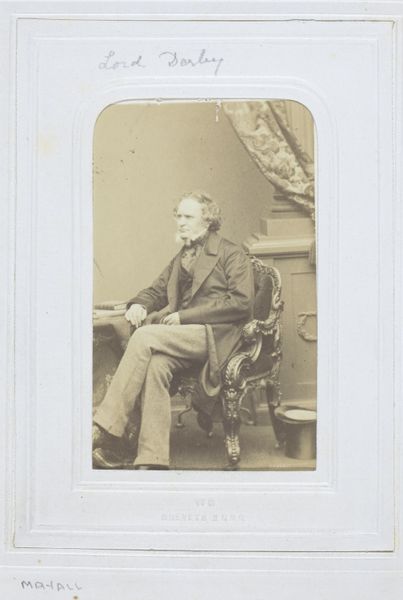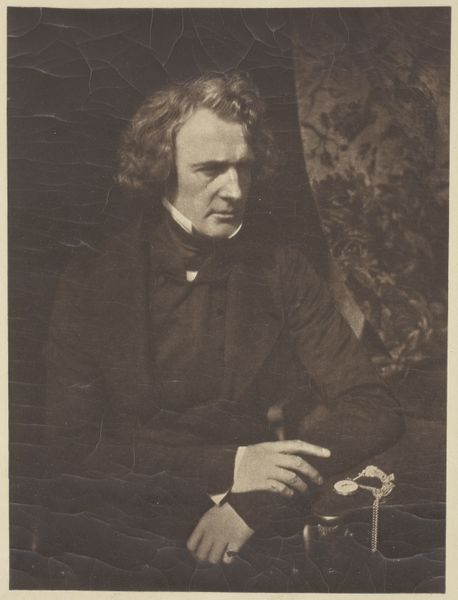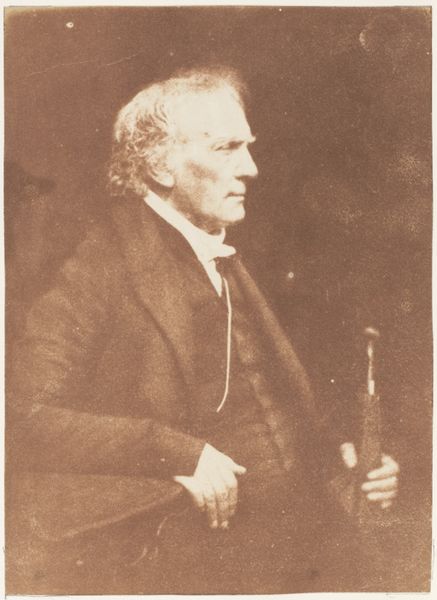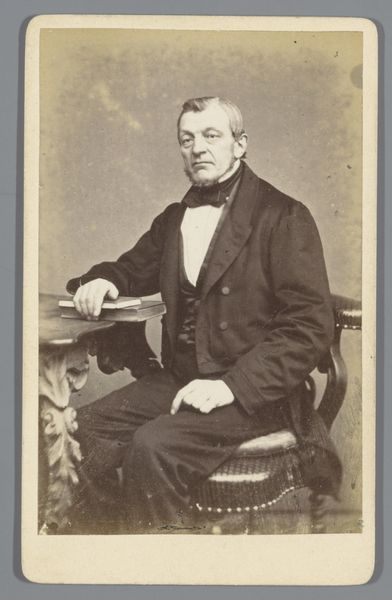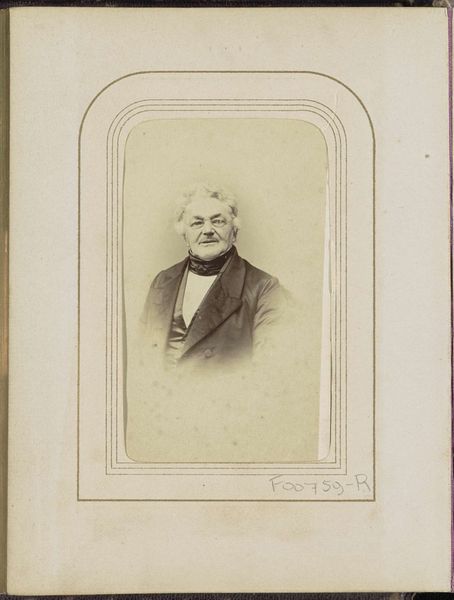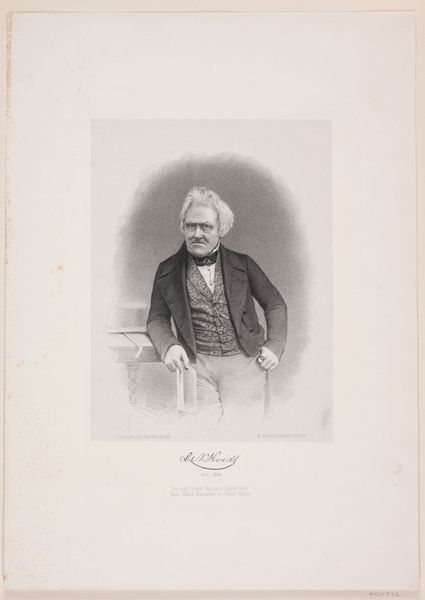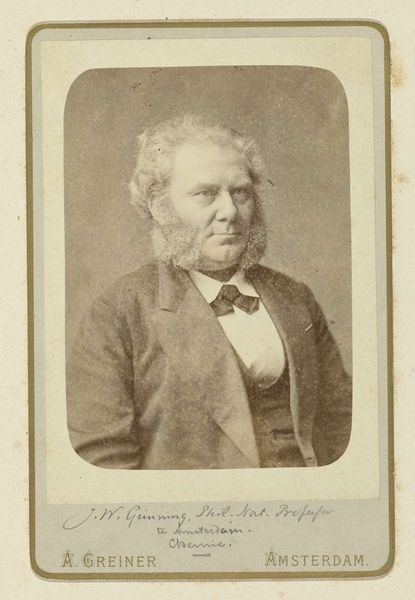
Dimensions: Image: 34.4 × 27.2 cm (13 9/16 × 10 11/16 in.) Mount: 50.4 × 47.3 cm (19 13/16 × 18 5/8 in.)
Copyright: Public Domain
Curator: Welcome. Here we have Mathew Brady's "Peter Force," likely a daguerreotype produced between 1856 and 1860. Editor: What strikes me first is the pose; the sitter's averted gaze gives it a pensive quality. It feels quite intimate, almost romantic in its soft focus. Curator: Well, consider that a daguerreotype, a direct positive image on a polished silvered copper plate, was a highly laborious and painstaking process back then. Each one required specific chemicals and careful manipulation of light and developing processes. Producing this kind of romantic effect would have taken real skill. Editor: Exactly! And this particular print beautifully captures the materiality inherent in photography. Look at the subtle tonal gradations and the depth created with a limited range of hues. It guides the eye to the intellectual aura suggested by books and papers to construct not just likeness but inner character. Curator: Given Brady's intention of creating a photographic record of prominent Americans, there's a deliberate manufacturing of historical memory here, isn't there? We know Peter Force was a mayor of Washington, D.C. and a printer who preserved essential historical documents. The production is entwined with notions of archive-building. Editor: I suppose the composition directs our attention towards that aim. The gaze draws me to the books as if extending toward the intellectual heft of a long and learned life. The hand then gestures back in towards what the viewer assumes has been decades spent making things, archiving, and producing knowledge. Curator: His posture speaks volumes. He holds documents as if to illustrate that history and political debate were actually produced physically through his effort and labor in writing and publishing, rather than being detached "objective" spheres of intellectual activity. Editor: Absolutely. The composition uses sharp detail around the face softening in the details. What that gives the viewer, though, is an intense moment of intimate study focused primarily on character. Curator: In essence, through photographic processes tied directly to individual and collective ambitions, Brady gives Force a distinguished stature while underscoring labor’s importance. Editor: Ultimately, this portrait offers a potent visual record—linking social standing and labor to processes inherent within photographic art-making. Curator: A powerful testament to the intertwined threads of historical memory and individual character!
Comments
No comments
Be the first to comment and join the conversation on the ultimate creative platform.
